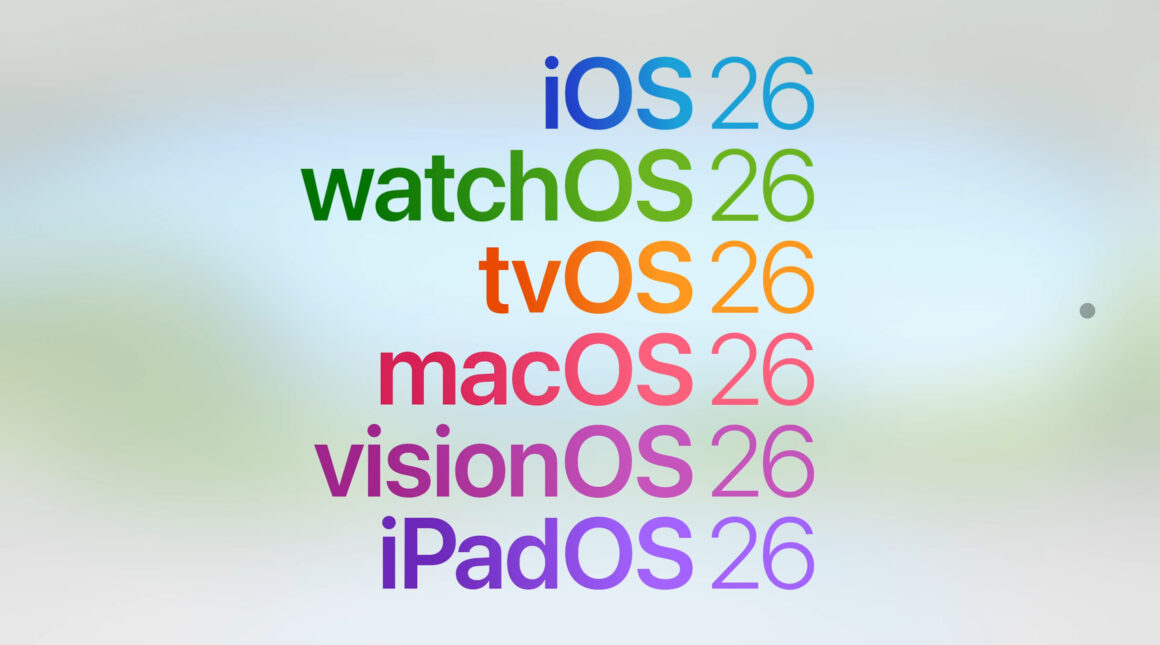Starting this year, Apple unifies its versioning scheme for its platforms, but why?
As you may already know, WWDC 2025 was when Apple announced that it would make this change for greater consistency, but why would Apple do that? The reason was that Apple’s previous versioning scheme for each platform was a mess. Usually, a version number would indicate how many times the software gets updates, but that’s not the case for some of Apple’s platforms.
macOS
Let’s take a look at macOS. When the Mac operating system debuted in 1984, it wasn’t called “macOS” at the time, but rather “System Software.” Apple used that brand from System 1 up to System 7.5. After that, Apple rebranded the operating system to “Mac OS”, which was retroactively referred to as the “classic Mac OS.” So Apple had Mac OS 7.6 up to Mac OS 9.
2001 marked the official launch of “Mac OS X”, which was an entirely new operating system built on UNIX, and the “X” was a Roman number for ‘10’, hence referring to the tenth version of the Mac operating system. The earliest versions of Mac OS X had names based on big cats, and for each major release, Apple denoted the version number as “10.x”. For example:
- Mac OS X 10.2: Jaguar
- Mac OS X 10.3: Panther
- Mac OS X 10.4: Tiger
…and so on until Mountain Lion (10.8). Starting with OS X 10.9, Apple switched the naming scheme to inspiring landmarks in California starting with Mavericks. It was important to note that Apple renamed “OS X” to “macOS” to be more consistent with other platforms that Apple added such as “watchOS” and “tvOS” starting with macOS 10.12 Sierra. Apple would continue to use this dot-number scheme for its major releases until 2020 – the year that Apple started its transition to Apple Silicon for its Macs. Starting that year, Apple used whole numbers starting with mac OS 11 for Big Sur.
iOS/iPadOS/tvOS
When Apple introduced the iPhone, Apple stated that it simply ran “OS X” at the time, but it wasn’t until a year later that Apple renamed the OS as “iPhone OS”, but in 2010, Apple renamed the OS as “iOS” since it would run on iPhone, iPod touch, and iPad at the time. The iPad would eventually get more optimized iPad-exclusive features optimized for the larger screen starting with iOS 9 such as Split View, so in 2019, Apple would introduce “iPadOS” to further distinguish the OS from the vanilla iOS, but it wasn’t called “iPadOS 1”, but rather “iPadOS 13” to coincide with iOS 19.
A similar scenario could apply to Apple TV. When it was introduced, it just ran “OS X” as Apple stated. But when Apple redesigned the Apple TV in 2010, Apple called the Apple TV’s OS “iOS”; it wasn’t until 2015 that Apple would rebrand the OS as “tvOS,” but Apple would continue to use the same version number as that of iOS.
How the current lineup of platforms stack up
Apple’s platforms have been expanding with watchOS in 2015 and visionOS in 2024, and what we had last year were the following:
- iOS 18
- iPadOS 18
- tvOS 18
- macOS 15
- watchOS 11
- visionOS 2
As you can see three of the systems match, but for the other three, they’re all over the place. So it can be quite a mental exercise to figure out which version of an operating system was released when, especially when someone would come to you and ask, “What version of iOS are we on?” Apple is determined to simplify its lineup, so Apple is taking inspiration from what car manufacturers have been doing for decades, and that is to have version numbers based on the upcoming year. “We’re unifying our version numbers across all our platforms. Our releases for the fall that will power us through the coming year, 2026, will be version 26,” says Craig Federighi. And this new versioning scheme will be especially helpful for additional operating systems to be added to the line, especially with Apple’s upcoming new “HomePad” product coming soon this fall.
So that’s how Apple’s versioning scheme for all its platforms has evolved. Do you think Apple made the right move? Let us know in the comments below, and follow us on X (@Appleosophy) for more Apple-related news







